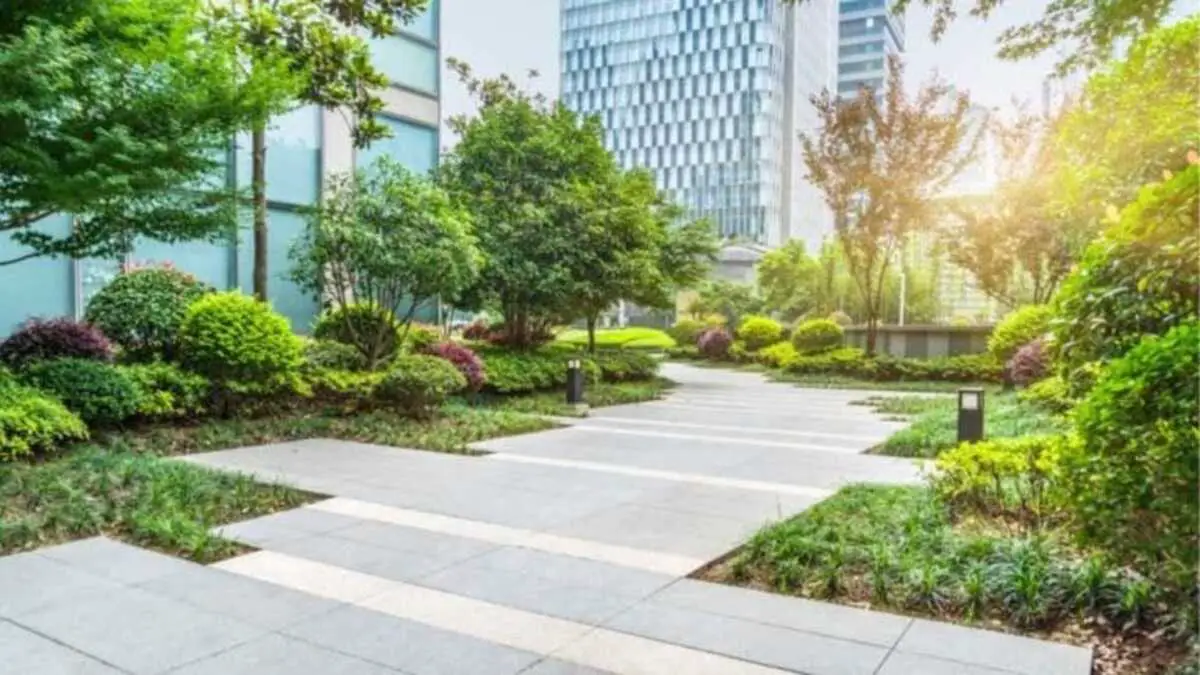NEWS
What are the sustainable strategies for landscape?

As the importance of environmental conservation and responsible resource management grows, sustainable landscape design has become paramount in concocting outdoor spaces that harmonize with nature. Sustainable strategies for landscape design aim to reduce environmental impact, conserve resources, and promote biodiversity while providing functional and aesthetically pleasing outdoor environments. We will investigate diverse, sustainable strategies that can be involved in landscape design, from selecting native plants to implementing water-efficient irrigation systems.
Strategies that can be involved in landscape design
- Native Plant Selection
One fundamental sustainable strategy in landscape design is carefully selecting native plants. Native species are adapted to the local climate, soil, and ecological conditions, requiring less water and maintenance than non-native plants. They also provide local wildlife with paramount habitat and food sources, promoting biodiversity. Incorporating native plants into your landscape conserves water and reduces the need for chemical pesticides and fertilizers. Native plants are typically more resilient and better suited to thrive in their natural environment, making them a wise choice for sustainable landscaping.
- Drought-Tolerant Landscaping
Drought-tolerant landscaping is critical to sustainable landscape design, especially in regions prone to water scarcity. You can significantly reduce water consumption by choosing plants that can thrive with minimal irrigation. Succulents, ornamental grasses, and Mediterranean plants are excellent options for creating a drought-tolerant landscape. Additionally, incorporating mulch around plants helps retain soil moisture, suppress weeds, and regulate soil temperature, further conserving water. Properly designed and installed drip irrigation systems can also target water delivery directly to the root zones of plants, minimizing waste and maximizing efficiency.
- Rainwater Harvesting
Rainwater harvesting is an eco-friendly strategy that involves collecting and storing rainwater for later use in irrigation. By capturing rainwater from roofs and other surfaces, you can reduce your reliance on municipal water supplies and lower your water bills. Rain barrels, cisterns, and rain gardens are common components of rainwater harvesting systems. When implemented effectively, rainwater harvesting can furnish a sustainable water source for your landscape while also reducing stormwater runoff, which can contribute to erosion and pollution of natural water bodies.
- Efficient Irrigation Systems
Efficient irrigation systems are paramount for responsible water use in landscape design. Traditional overhead sprinkler systems tend to waste water through evaporation, runoff, and inefficient coverage. Sustainable alternatives like drip irrigation and soaker hoses deliver water directly to plant roots, minimizing water loss. Additionally, modern irrigation controllers can be programmed to adjust watering schedules based on weather conditions, soil moisture levels, and plant requirements. These smart irrigation systems help conserve water by avoiding unnecessary watering during rain or when plants don’t need it.
- Permeable Hardscape Surfaces
Incorporating permeable hardscape surfaces, such as permeable pavers or gravel paths, is a sustainable strategy that helps manage stormwater runoff. Unlike traditional impervious surfaces like concrete or asphalt, permeable surfaces allow rainwater to infiltrate the soil, reducing the risk of flooding and soil erosion. Permeable hardscapes also help recharge groundwater and support healthy root systems for nearby trees and plants. They contribute to the overall sustainability of your landscape by promoting natural water filtration and reducing the burden on stormwater management systems.
- Sustainable Materials
Choosing sustainable materials for hardscaping and construction elements is another paramount aspect of eco-friendly landscape design. Skim for locally sourced, recycled, or certified as environmentally friendly materials. For instance, reclaimed wood, recycled glass, and permeable concrete are sustainable options for various landscape features. Utilizing sustainable materials reduces the environmental impact of your landscape, supports responsible manufacturing practices, and minimizes carbon emissions associated with transportation.
- Biodiverse Plantings
Promoting biodiversity within your landscape is an important sustainable strategy. A diverse range of plant species provides habitat and food sources for wildlife, including pollinators like bees and butterflies. Consider planting a mix of trees, shrubs, perennials, and annuals to assemble a rich and dynamic ecosystem. Furthermore, incorporate wildlife-friendly features such as birdhouses, bat boxes, and bee hotels to encourage biodiversity in your garden. By nurturing a thriving ecosystem, you contribute to the environment’s overall health.
- Organic Gardening Practices
Adopting organic gardening practices is a sustainable approach that prioritizes soil health and reduces chemical inputs. Instead of relying on synthetic pesticides and fertilizers, use natural alternatives and organic matter like compost and mulch to enrich the soil. Integrated Pest Management (IPM) techniques can help control pests and diseases in an environmentally responsible way. IPM implicates monitoring garden conditions, identifying problems early, and using targeted methods to address issues, reducing the need for harmful chemicals.
Sustainable strategies for landscape design are essential for creating outdoor spaces that align with environmental responsibility and resource conservation. By carefully selecting native plants, prioritizing drought-tolerant landscaping, incorporating rainwater harvesting, using efficient irrigation systems, and embracing sustainable materials, you can reduce your ecological footprint and promote biodiversity. Additionally, permeable hardscape surfaces, biodiverse plantings, organic gardening practices, proper plant spacing and placement, and efficient maintenance all contribute to the sustainability of your landscape. Explore the top landscape companies in Portland to find experienced professionals who can transform your outdoor space into a sustainable and stunning environment that aligns with your vision and values.
Harper Harrison is a reporter for The Hear UP. Harper got an internship at the NPR and worked as a reporter and producer. harper has also worked as a reporter for the Medium. Harper covers health and science for The Hear UP.










